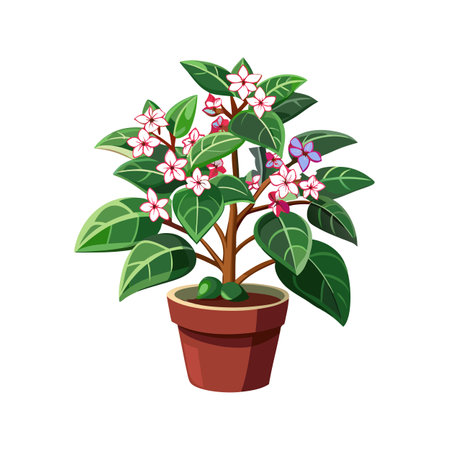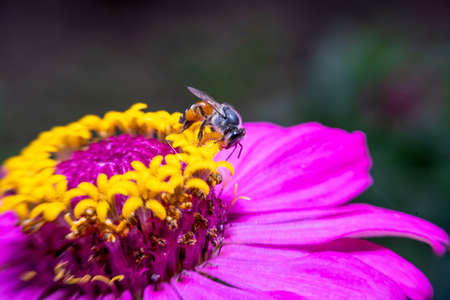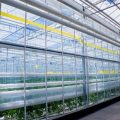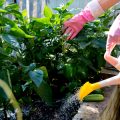Introduction to Organic Pollinator Gardening
Pollinators—like bees, butterflies, hummingbirds, and even some bats—are the unsung heroes of our gardens and food systems. Without them, many of the fruits, vegetables, and flowers we love simply wouldn’t thrive. In fact, about one-third of the food Americans eat depends on pollination. But pollinators face serious threats from habitat loss and chemical-heavy farming practices. That’s where organic gardening steps in as a practical solution. By skipping synthetic pesticides and fertilizers, organic gardens create a safer haven for these vital creatures. When you plant with pollinators in mind, you’re not just helping local wildlife—you’re also boosting your own harvests. A pollinator-friendly garden brings healthier plants, bigger yields, and a more resilient ecosystem right to your backyard or community plot. Whether you’re growing tomatoes on your patio or tending rows of berries on a suburban lot, embracing organic methods is a win-win for nature and your table.
Key Types of Pollinators in the U.S.
When planning your organic garden for pollinators, it’s important to understand which creatures are doing the heavy lifting. America is home to a diverse group of pollinators, each with unique habits and needs. Here’s a practical rundown on how to recognize them and make your garden a haven for their activity.
Common American Pollinators
| Pollinator | How to Recognize | How to Support |
|---|---|---|
| Bees (Native & Honeybees) | Small to medium insects, fuzzy bodies, often yellow/black or metallic green/blue | Plant native wildflowers, avoid pesticides, provide bee houses or bare soil patches for ground-nesters |
| Butterflies | Colorful wings, slender bodies, active during the day; commonly monarchs, swallowtails, painted ladies | Grow nectar-rich flowers (milkweed for monarchs), offer sunny spots and shallow water dishes |
| Hummingbirds | Tiny birds with iridescent feathers, rapid wingbeats, hover as they feed on flowers | Plant tubular red/orange flowers (like salvia or trumpet vine), use feeders with sugar water (no dye) |
| Moths | Usually nocturnal, muted colors, thick furry bodies; like sphinx moths and hawk moths | Add night-blooming flowers (evening primrose), reduce outdoor lights at night |
| Beetles & Flies | Varied shapes/sizes; beetles are often round/hard-shelled; flies may mimic bees but have short antennae | Diverse flowering plants (daisies, goldenrod), avoid broad-spectrum insecticides |
The Importance of Diversity in Your Garden
A mix of flowers—varying in shape, color, and bloom time—ensures you attract a wide range of pollinators. Each type has different preferences. For example, hummingbirds love bright reds while bees prefer blues and purples. Butterflies need landing platforms, whereas some bees like tubular blooms. By supporting this diversity organically—without chemicals—you create a resilient ecosystem that benefits your crops and the local environment alike.

3. Essential Native Plants for Pollinators
Choosing the right native plants is key to supporting pollinators in your organic garden. American climates are incredibly diverse, so picking region-appropriate flowers, herbs, and shrubs makes all the difference for both plant health and pollinator attraction. Here’s how to select top performers that supply high-value nectar and pollen while thriving with minimal fuss.
Why Go Native?
Native plants have evolved alongside local pollinators such as bees, butterflies, and hummingbirds. They’re naturally adapted to your area’s soil, rainfall, and temperature patterns, which means they typically require less water and no chemical fertilizers or pesticides—perfect for an organic approach. Plus, these plants provide reliable food sources that local pollinators actually prefer.
Top Native Flowers
If you want constant color and busy pollinators in your yard, include a variety of blooming times from early spring through fall. In the Eastern U.S., coneflowers (Echinacea purpurea), black-eyed Susans (Rudbeckia hirta), and bee balm (Monarda didyma) are favorites. Western gardeners can try California poppy (Eschscholzia californica) or blanket flower (Gaillardia pulchella). For Midwest gardens, wild bergamot (Monarda fistulosa) and prairie blazing star (Liatris pycnostachya) are reliable choices. Mix different shapes and colors to attract diverse pollinators.
Beneficial Herbs for Bees and Butterflies
Herbs do double duty in the pollinator garden: they flavor your cooking and draw beneficial insects when allowed to flower. Anise hyssop (Agastache foeniculum) is beloved by bumblebees, while mountain mint (Pycnanthemum spp.) attracts a wide range of native bees. Let chives and oregano bloom to create a buzzing buffet all summer long.
Shrubs That Anchor Your Habitat
Shrubs provide structure and year-round shelter for pollinators. In the Southeast, buttonbush (Cephalanthus occidentalis) delivers nectar-rich blooms just when many bees need it most. In northern states, New Jersey tea (Ceanothus americanus) is drought-tolerant and butterfly-friendly. Consider serviceberry (Amelanchier spp.) as a native shrub that offers spring flowers for pollinators and summer berries for birds.
Quick Tips for Success
Select at least three species that bloom at different times to ensure season-long forage. Source plants from reputable local nurseries that avoid neonicotinoid pesticides. Group similar plants together in “drifts” to make them easier for pollinators to spot. With thoughtful plant choices, your organic garden will become a crucial lifeline for America’s vital pollinator species.
4. Organic Gardening Practices for Healthy Pollinators
If you want to welcome pollinators and keep them coming back, the way you care for your garden is just as important as what you plant. Here’s how to create a pollinator-friendly environment using organic methods that are tried-and-true on American homesteads and backyard plots.
Composting: Building Healthy Soil Naturally
Healthy, living soil is at the heart of any thriving organic garden. By composting kitchen scraps, leaves, grass clippings, and even coffee grounds, you boost soil fertility without synthetic fertilizers that can harm pollinators. Compost provides nutrients and supports beneficial microorganisms, creating a natural balance where pollinators like bees and butterflies can thrive.
Natural Pest Control: Protect Pollinators, Not Pests
Avoiding chemical pesticides is key—many common sprays harm both pests and helpful insects. Instead, use these real-world organic techniques:
| Technique | How It Helps Pollinators |
|---|---|
| Hand-picking pests | Keeps chemicals out of the garden ecosystem entirely |
| Companion planting (e.g., marigolds with tomatoes) | Repels unwanted insects while attracting pollinators naturally |
| Diatomaceous earth & neem oil (as spot treatments) | Targets pests with minimal impact on pollinators when used carefully |
| Encouraging beneficial insects (ladybugs, lacewings) | Predators eat pests without harming pollinators |
Water Sources: Small Touches Make a Big Difference
Pollinators need water too! Set out shallow dishes with pebbles or flat stones so bees and butterflies have a safe place to drink. Change the water every few days to prevent mosquitoes.
Mulching for Moisture and Habitat
A layer of organic mulch (like straw or shredded leaves) not only conserves soil moisture but also gives ground-dwelling bees places to nest. Avoid dyed or treated mulches—go natural for the best results.
Let It Be Wild: Embrace Some Messiness
A tidy yard isn’t always best for nature. Leave a brush pile or some bare patches of ground—these can be crucial nesting spots for native bees and shelter for butterflies in your organic garden ecosystem.
5. Year-Round Bloom Strategies
When it comes to organic gardening for pollinators, one of the most effective ways to support bees, butterflies, and other beneficial insects is by making sure there’s always something in bloom. Consistent flowers mean consistent food—nectar and pollen—right when local pollinators need it most. Here are some down-to-earth methods for keeping your garden buzzing all season long.
Choose a Variety of Bloom Times
Select plants that flower at different points throughout the year. Start with early spring bloomers like crocus, native willows, and wild columbine to give pollinators a jumpstart after winter. Follow up with summer favorites such as bee balm, black-eyed Susan, and coneflower. For fall, consider goldenrod and asters. Mixing perennials and annuals ensures you’re not left with any gaps in your flowering calendar.
Plant in Succession
If you’re growing from seed, stagger your planting dates every couple of weeks for annuals like sunflowers or zinnias. This technique keeps fresh flowers coming even as earlier blooms fade out—sort of like setting the table again before the last meal is cleared away.
Use Native Species
Native plants are perfectly tuned to your region’s climate and pollinator species. They tend to bloom in sync with local pollinator activity, making them a reliable food source. Check with your county extension office or local native plant society for region-specific recommendations.
Don’t Forget Shrubs and Trees
Pollinator gardens aren’t just about what’s on the ground. Early-flowering shrubs like serviceberry and redbud or late-blooming trees such as sourwood extend the nectar season upward—and offer shelter as well.
Keep It Organic
Finally, remember that using organic methods—like composting, mulching, and skipping synthetic pesticides—helps maintain healthy soil and safe forage for pollinators all year long. Healthy plants mean more reliable blooms, which means a thriving pollinator population in your backyard ecosystem.
6. Building Pollinator Habitats at Home
If you want your organic garden to truly support pollinators, it’s about more than just planting flowers. Creating a thriving habitat means thinking like a pollinator—what do they need to survive and thrive? Let’s break down the essentials for turning your backyard into a pollinator paradise.
Shelter: Giving Pollinators a Place to Rest
Pollinators need safe spots to hide from predators and bad weather. Leave some leaf litter and small brush piles in less-trafficked corners of your yard—this mimics natural habitats. Consider stacking some logs or rocks, which offer both shelter and overwintering sites for native bees and beneficial insects. If you’re feeling crafty, install bee hotels made from untreated wood with holes drilled in various sizes (just avoid bamboo, which can hold too much moisture). Even a few un-mulched patches of bare soil can help ground-nesting bees feel at home.
Water: Providing Clean Drinking Spots
Pollinators get thirsty, especially during hot American summers. A shallow birdbath or saucer filled with pebbles and fresh water gives bees and butterflies a safe place to land and sip. Change the water every couple of days to prevent mosquitoes, and position the water source near flowering plants but out of full sun so it doesn’t dry up too quickly. You can also let dew collect on broad leaves for tiny pollinators—it’s all about making hydration easy.
Nesting Sites: Encouraging Next-Generation Pollinators
Diverse nesting opportunities mean more pollinators will call your garden home year after year. For native bees, leave patches of undisturbed soil or install bee blocks. Don’t rush to clear away hollow stems in the fall—many solitary bees lay eggs inside them, and leaving them until spring supports their full life cycle. For butterflies, include host plants (like milkweed for monarchs), since caterpillars need food as much as adult butterflies do.
Safe Havens: Minimizing Hazards
A true sanctuary for pollinators is free from chemical pesticides and herbicides. Practice organic gardening methods—use compost instead of synthetic fertilizers, hand-pick pests when possible, and plant a mix of flowering species that bloom across all seasons. Also, keep outdoor lighting minimal at night; bright lights can disrupt nocturnal pollinators’ natural rhythms.
Your Backyard, Their Refuge
When you provide shelter, water, and nesting sites—all without harmful chemicals—you create a backyard ecosystem that invites pollinators to stay and multiply. Not only does this boost your harvests and flower displays, but it also helps rebuild declining pollinator populations across America, one garden at a time.


